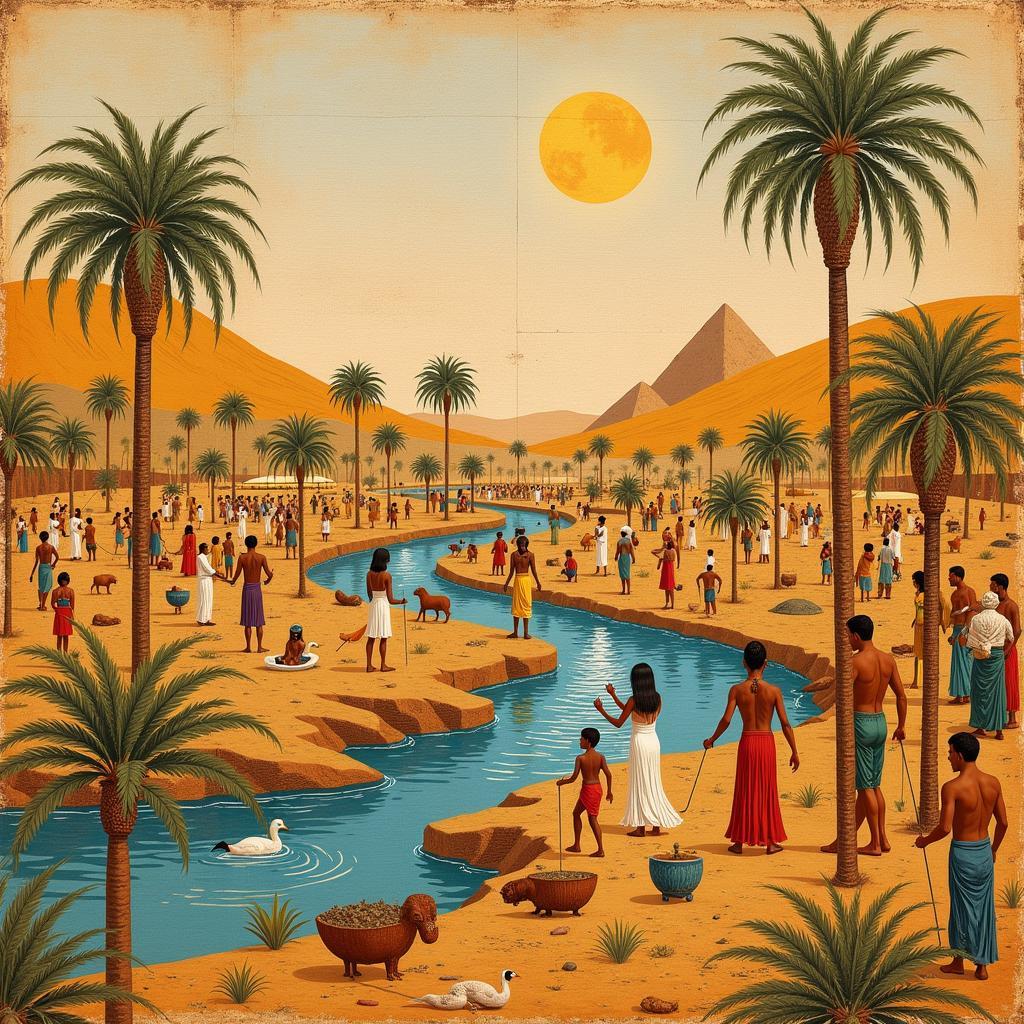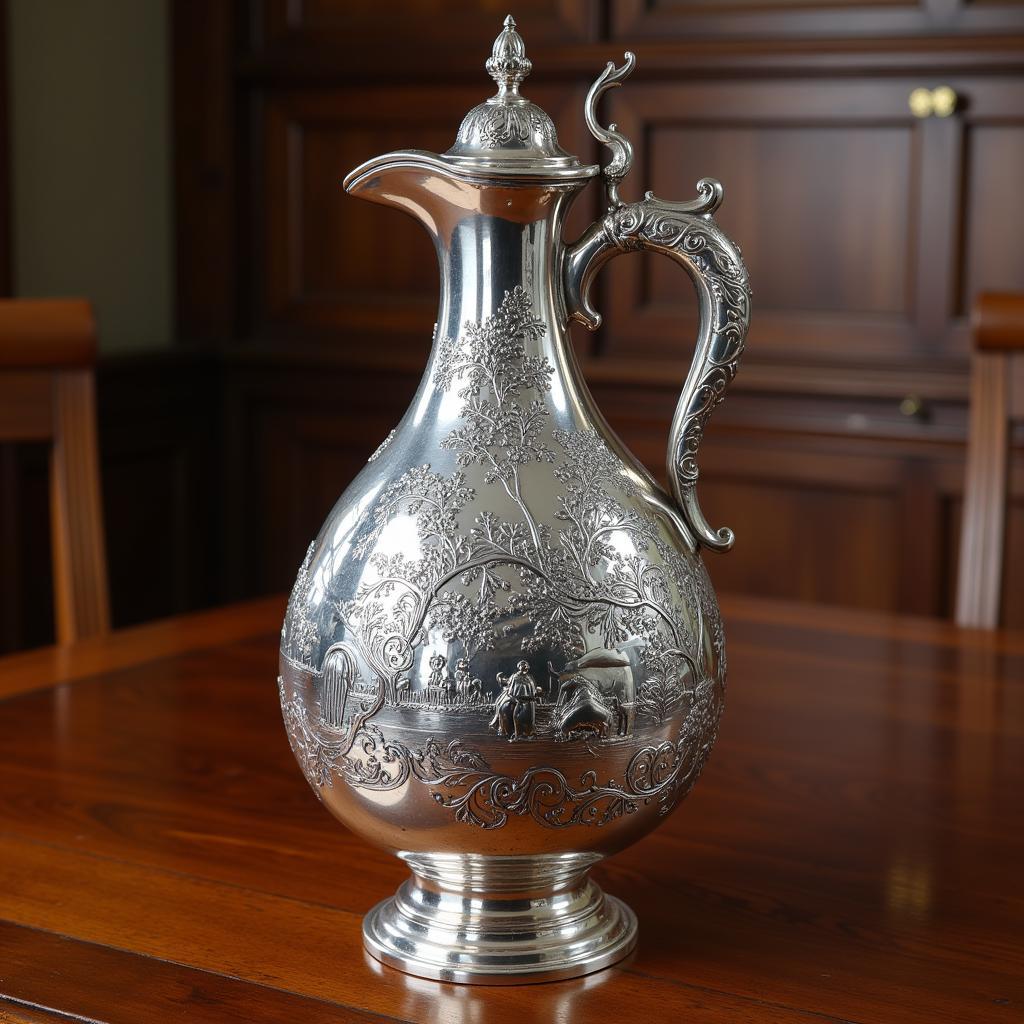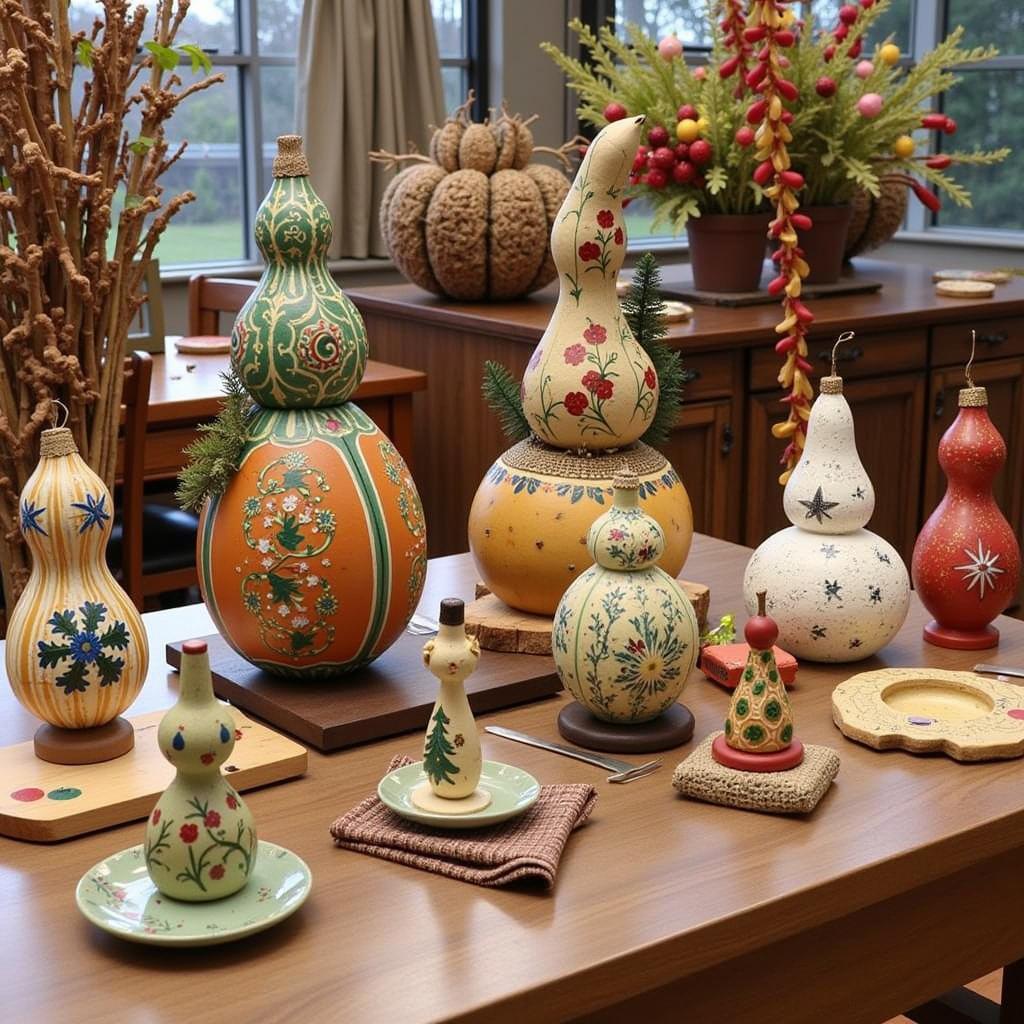Unveiling the Secrets of Papyrus Art Egypt
Papyrus Art Egypt holds a unique place in the history of art and communication. From depicting scenes of daily life to religious beliefs and funerary texts, papyrus art offers a vibrant window into ancient Egyptian culture. Let’s delve into the fascinating world of papyrus art and discover its enduring legacy.  Ancient Egyptian papyrus art depicting a scene of daily life, showcasing vibrant colors and intricate details.
Ancient Egyptian papyrus art depicting a scene of daily life, showcasing vibrant colors and intricate details.
The Significance of Papyrus in Ancient Egypt
Papyrus, a plant readily available along the Nile River, served as the primary writing material in ancient Egypt. Its versatility extended beyond simple record-keeping; it became the canvas for stunning artistic expressions. Imagine a world without paper – papyrus was the equivalent in ancient Egypt. From administrative documents to literary works and, of course, art, papyrus played a pivotal role. These delicate yet durable sheets, made from the papyrus plant, documented the lives, beliefs, and artistic sensibilities of ancient Egyptians.
Materials and Techniques: Bringing Papyrus Art to Life
The creation of papyrus art was a meticulous process. Artisans carefully prepared the papyrus sheets, and then skilled artists used natural pigments derived from minerals and plants to create vibrant and long-lasting images. The Egyptians mastered the art of mixing these pigments, resulting in a rich palette of colors that still captivate us today.
Themes and Symbolism in Papyrus Art
Egyptian papyrus art isn’t just aesthetically pleasing; it’s rich in symbolism. Common themes include scenes from daily life, depictions of gods and goddesses, and narratives of the afterlife. These artistic expressions provide invaluable insights into the beliefs, values, and cultural practices of ancient Egyptian society. Think of them as visual narratives that tell stories of a civilization that thrived thousands of years ago. egypt wall art depictions further exemplify these captivating narratives.
Deciphering the Stories Within: Understanding the Iconography
Understanding the symbolic language within papyrus art is like unlocking a secret code. Each element, from the colors used to the gestures of the figures, carries a specific meaning. Hieroglyphs, often incorporated into the artwork, add another layer of interpretation. hieratic art also shares similar symbolic significance with papyrus art.
Papyrus Art: A Bridge to the Afterlife
Papyrus played a vital role in ancient Egyptian funerary practices. The Book of the Dead, a collection of spells and prayers written on papyrus, was often placed in tombs to guide the deceased on their journey through the underworld. last judgement of hunefer ap art history illustrates this crucial aspect of ancient Egyptian beliefs. These papyrus scrolls, adorned with intricate illustrations, served as protective guides and testaments to the deceased’s spiritual journey.
Conclusion: The Enduring Allure of Papyrus Art Egypt
Papyrus art Egypt continues to fascinate and inspire us today. These ancient masterpieces offer a glimpse into a vibrant culture and a profound understanding of ancient Egyptian life, beliefs, and artistic achievements. The intricate detail and symbolic richness of papyrus art ensure its enduring legacy as a treasured window into the past.
Dr. Aaliyah Hassan, renowned Egyptologist, shares her perspective, “Papyrus art is not merely decoration; it’s a vibrant narrative of ancient Egyptian life. Every brushstroke tells a story, every symbol reveals a belief, offering us a remarkable connection to a civilization that thrived millennia ago.”
Professor Omar El-Masry, expert in ancient Egyptian art, adds, “The meticulous detail and vibrant colors of papyrus art are a testament to the skill and artistry of the ancient Egyptians. Their mastery of color and composition is truly remarkable.”
Dr. Nadia Khalil, specializing in ancient Egyptian funerary practices, observes, “The use of papyrus in funerary rituals underscores its profound significance in ancient Egyptian culture. The Book of the Dead, with its intricate illustrations and spells, was believed to be essential for safe passage into the afterlife.”
For any inquiries, reach out to us at Phone: 02462573573, Email: danteum@gmail.com, or visit us at Savico Megamall, 7-9 Đ. Nguyễn Văn Linh, Gia Thụy, Long Biên, Hà Nội 10000, Việt Nam. We offer 24/7 customer support.




